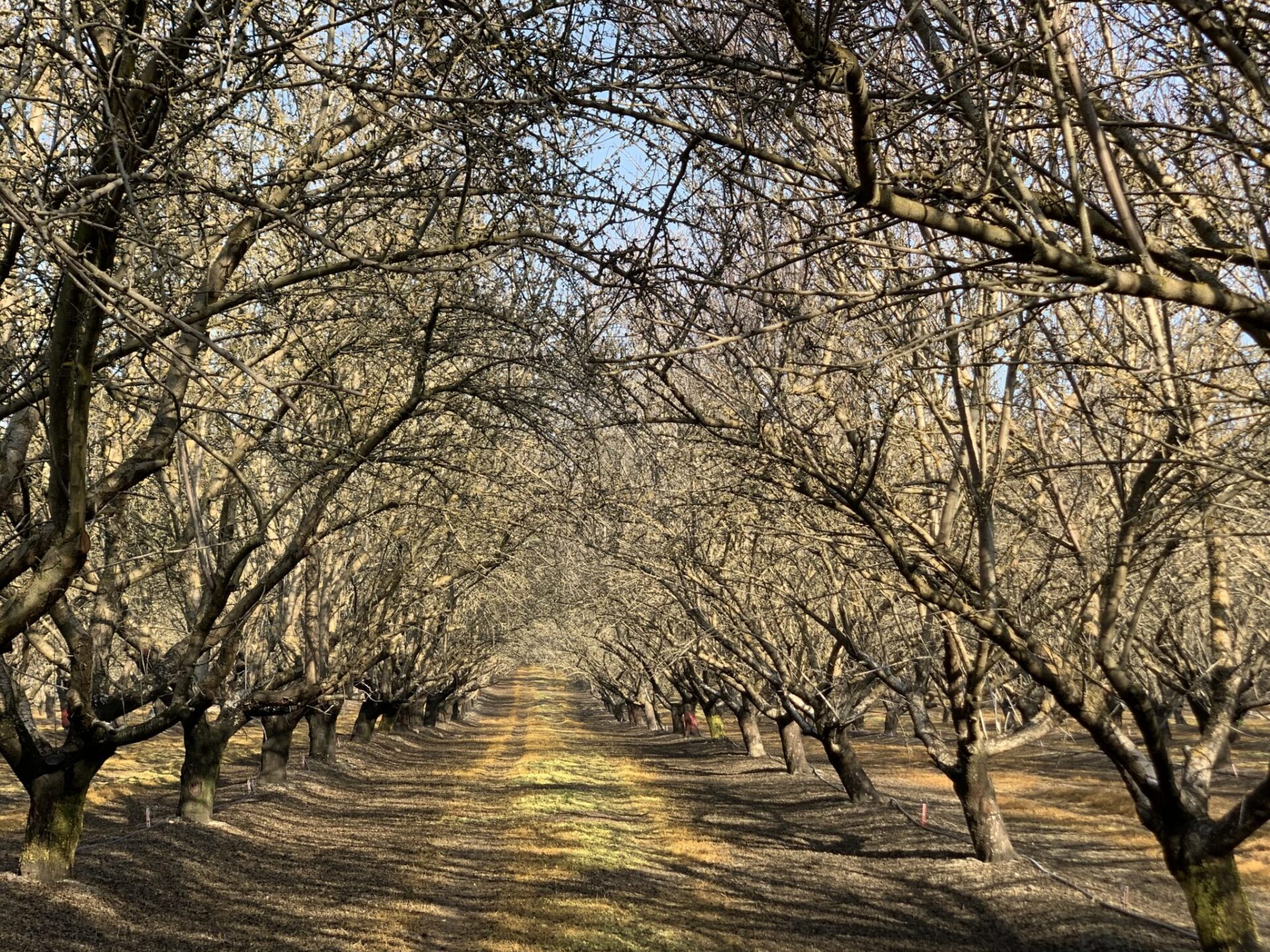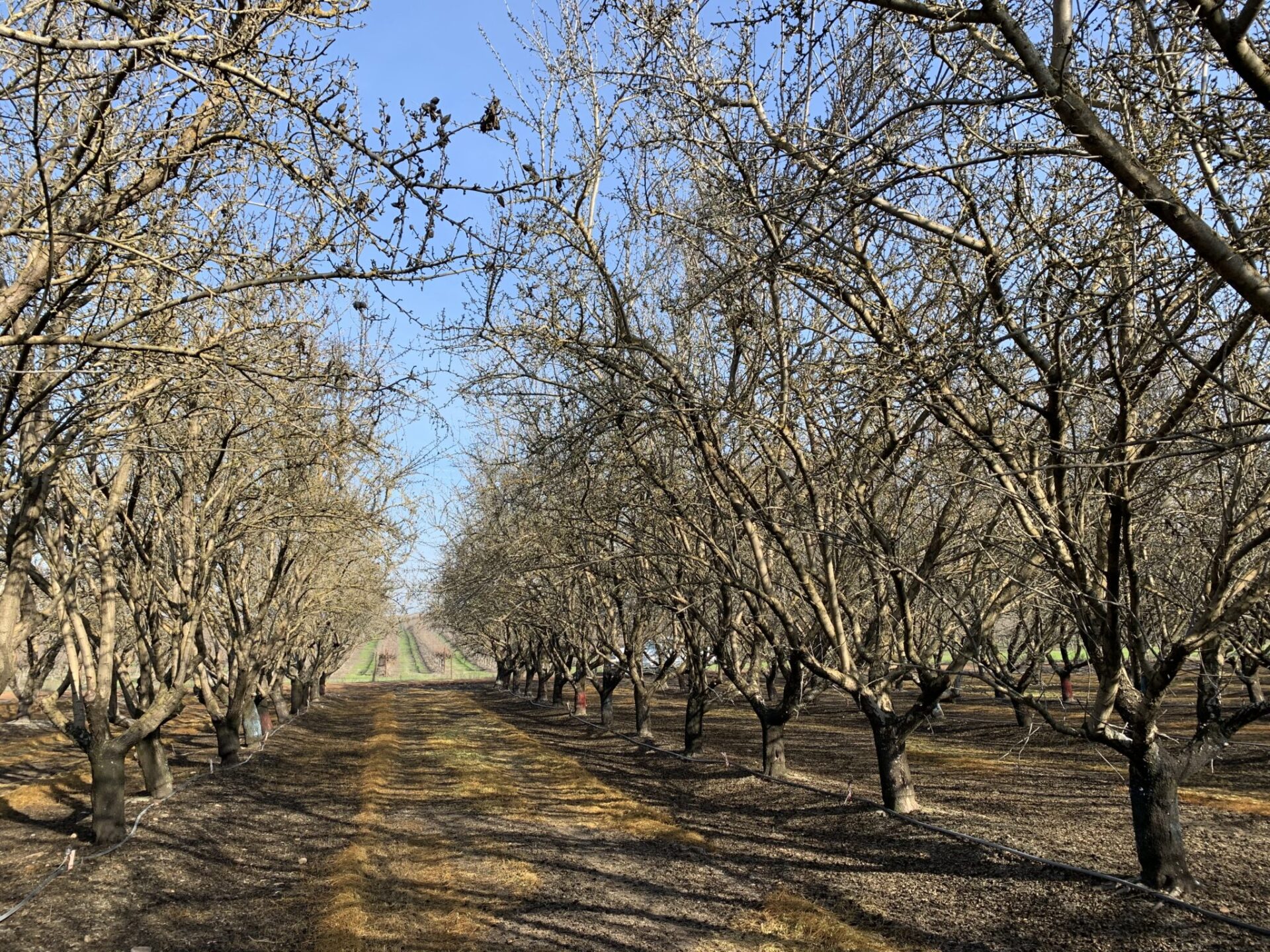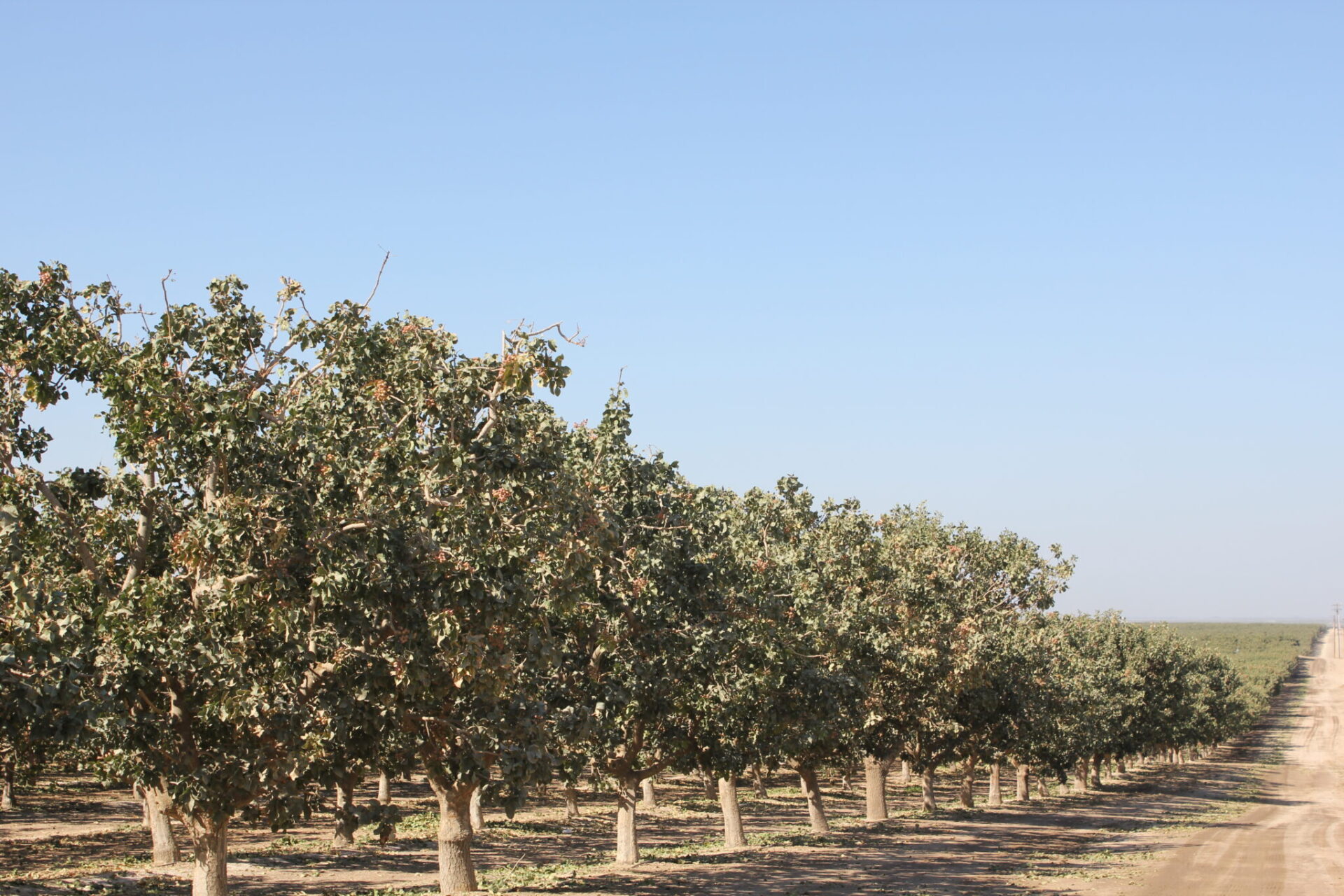Capturing the maximum sunlight in a tree nut orchard increases potential for improved yields.
UC Davis Pomology Specialist Bruce Lampinen’s research has shown that light interception by trees is related to yield potential. With that in mind, orchard trials spanning two decades are confirming advantages of closer tree spacing in almond orchards.
Almonds and walnuts are the two predominant tree nut species where spacing strategies are being studied. No formal research on pistachio tree spacing has been conducted as orchard designs are limited by harvest equipment and current cultivar/rootstock combinations. Super-high-density plantings of almonds are in a different category.
“Even with vigorous trees, there does not appear to be a lot of downside to planting almond trees closer down the row,” said Roger Duncan, UCCE pomology advisor in Stanislaus County, who initiated a long-term almond orchard spacing trial in 1999.The 28-acre trial has three almond varieties: Nonpareil, Carmel and Sonora planted on Nemaguard, Lovell or Hansen rootstocks. Four in-row spacings were 10’ x 22’, 14’ x 22’, 18’ x 22’ and 22’ x 22’.
Trees planted closer down the row fill in the space earlier, increasing the potential for higher early yields as more tree canopies capture more sunlight. The trees also kind of keep each other in check, Duncan said. Their height and width are smaller, making them easier to shake, and they sustain fewer shaker injuries, leading to fewer replants over time. When you plant trees more closely down the row, they actually require less pruning and may eliminate the need for hedging in older orchards, which is counterintuitive to many growers. Good spray coverage is easier to achieve with smaller trees, and they may have less disease and navel orangeworm.
Spacing Considerations
“There are lots of opinions on almonds,” Cliff Beumel of Agromillora said. Orchards with larger varieties that are widely spaced can lose significant per-acre production if a tree is lost. Trees planted tighter have better early yields. Yield evens out with wider plantings by year 5 to 6, Beumel said, but at 15th leaf, tighter plantings were found to out-yield wider-spaced trees. The downside is higher upfront costs as more trees are purchased, and more sprinkler heads or drip emitters are needed.
Beumel agreed that the best long-term studies, taking into account costs and management, show that tighter plantings have an economic edge.
“You have choices in spacing, but make sure you are not giving up something on the end,” he said.
Walnuts have the widest range in spacing, Beumel said. Trials have shown that rootstock choices affect spacing decisions. Soils may also dictate tree size. Denser plantings may require more hedging to overcome shading.
Tree spacing decisions should be made based on the expected vigor of the orchard considering soil, variety and rootstock, Duncan said. There is a greater benefit to planting smaller varieties closer and more of a risk of future yield loss by planting them too far apart, he said.
Growers who are facing irrigation wter shortages should realize that water use is not dependent on the number of tree trunks per acre.
“It’s the amount of active canopy that determines water use, not the number of trunks in the ground,” Duncan said.
Duncan’s study reported there are other advantages to closer-planted almonds other than potentially higher earlier yields. Closer plantings “kind of hold each other up,” Duncan said, and trees are less likely to be blown over. Scaffold breakage is also less likely in closer plantings. He did report that growers have concerns that diseases such as Alternaria leaf spot may be more severe in closer-planted orchards. Duncan shares that concern when growers decrease the distance between rows, but not when planting trees closer down the row. Planting trees closer down the row can actually improve drying nuts on the ground because trees don’t grow as far into the drive row, letting more sunlight fall on the ground between the rows.
His advice is to plant almonds in the neighborhood of 21 to 22 feet between rows with 12 to 16 feet down the row to optimize light interception without creating problems, depending on expected tree vigor. The smaller trees shake better at harvest, reducing mummies and shaker injury. Planting trees closer down the row increases planting costs but doesn’t affect future costs very much. There are more trees to shake, but they shake better and faster. However, when growers reduce distance between rows, they set themselves up for higher expenses for the life of the orchard. Every extra foot closer between rows means about a 5% increase in costs for all tractor work, spray materials and irrigation.

Research Findings
In his 21-year trial, Duncan said that Nonpareil on Nemaguard rootstock had the best cumulative yields in the 10’ x 22’ spacing at 46,647 kernel pounds per acre compared to 41,841 pounds in the 22’ x 22’ trees. Carmel on Nemaguard also performed best at 10’ x 22’ spacing, yielding 51,254 pounds per acre compared to 43,239 kernel pounds per acre in the widest spacing. Carmel planted in the widest spacing at 22’ x 22’ did not fill their allotted space over the trial and Duncan noted the trees may never reach full canopy in that spacing, and may never reach their full yield potential.
In walnuts, a 2016 trial led by UCCE farm advisor Kari Arnold, found similar results with denser plantings. This trial to evaluate interactive effects of planting density and rootstocks on tree size, structural integrity, short- and long-term yield and orchard longevity used Chandler, budded to either seedling Paradox, VX211 or RX1 rootstocks planted in 22’ x 22’, 26’ x 26’ and 30’ x 30’ densities.
The trial noted that as tree densities increased, so did costs for orchard establishment. Costs were not only increased due to the number of trees needed, but also for water, fertilizer, labor and chemical inputs. Increasing densities boosted management expenses to $817.66 for 22’ x 22’, $625.76 for 26’ x 26’ and $502.21 for 30’ x 30’.
Photosynthetically Active Radiation (PAR), or light interception, was measured for the first time in 2018 and was reported as generally higher in the higher-density plantings. Trees on the RX1 rootstock had the highest light interception measured for any given spacing.
Stem water potential measured in 2018 did not differ among rootstocks and densities when averaged across the entire season, but was variable by date within the orchard.
Sacramento Valley Orchard Source, a UCCE publication, recommends planting walnut trees at a density that fills the space without crowding. This strategy should reduce shading and may help avoid the need for mechanical hedging, minimizing dead wood and reducing disease pressure.













